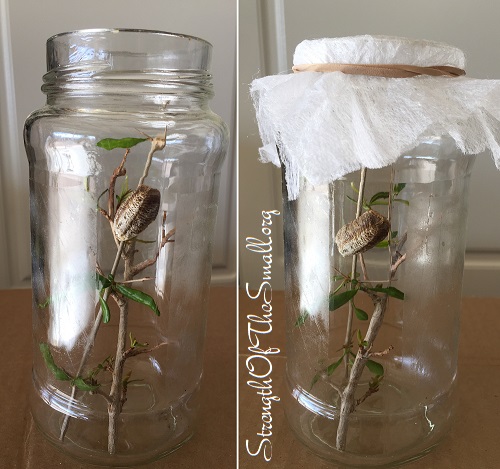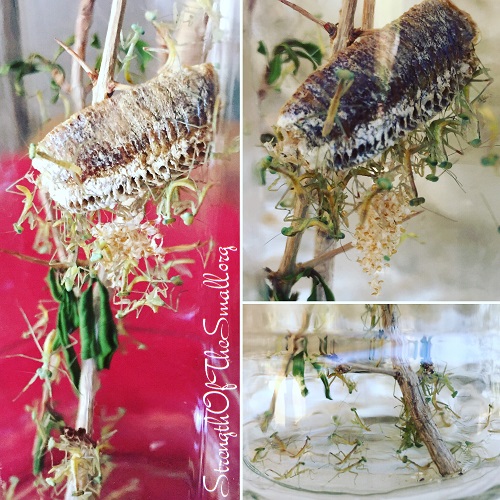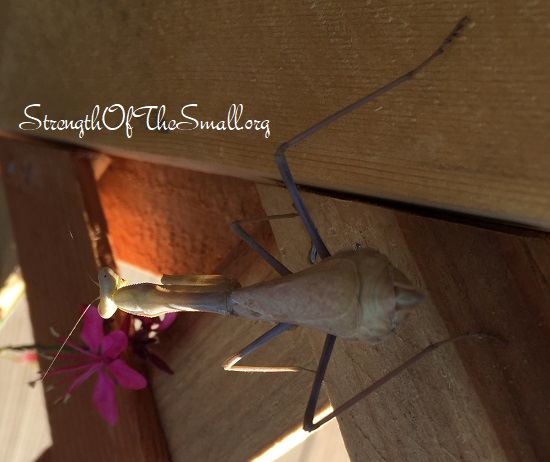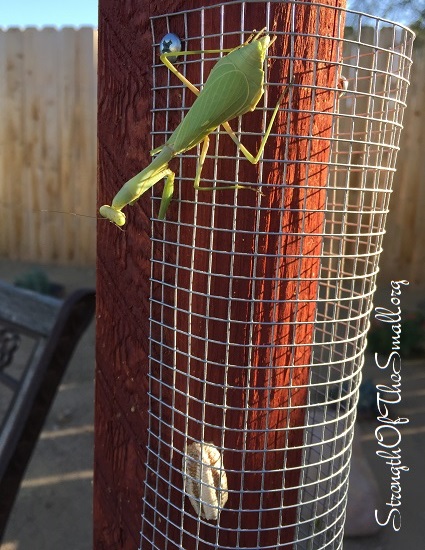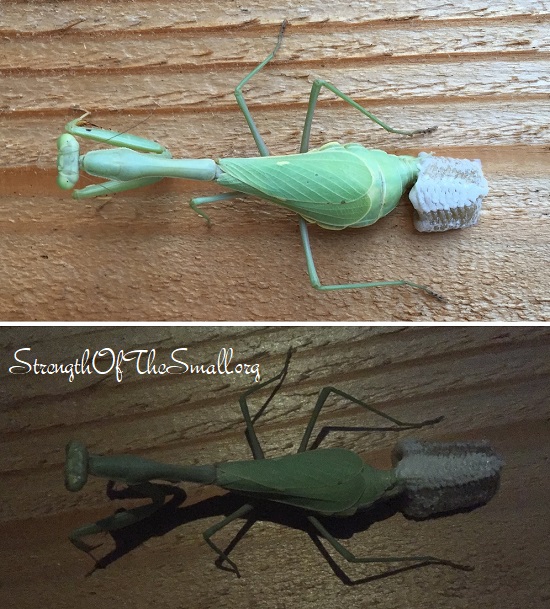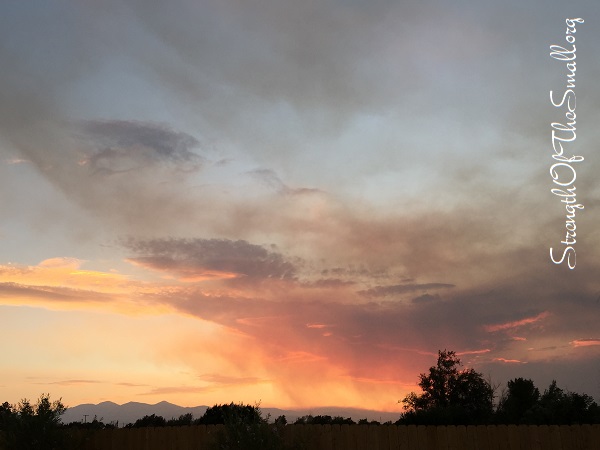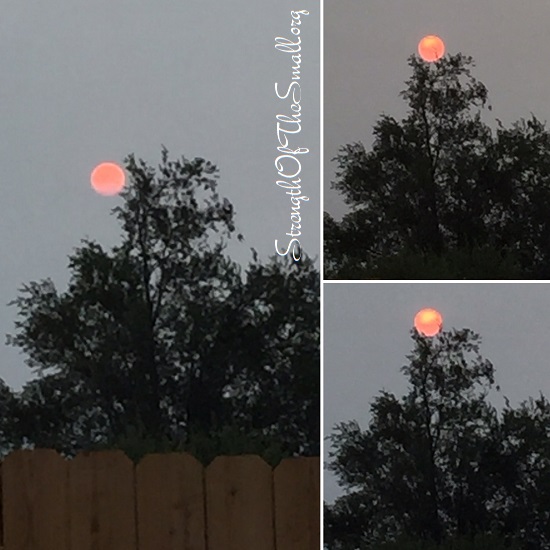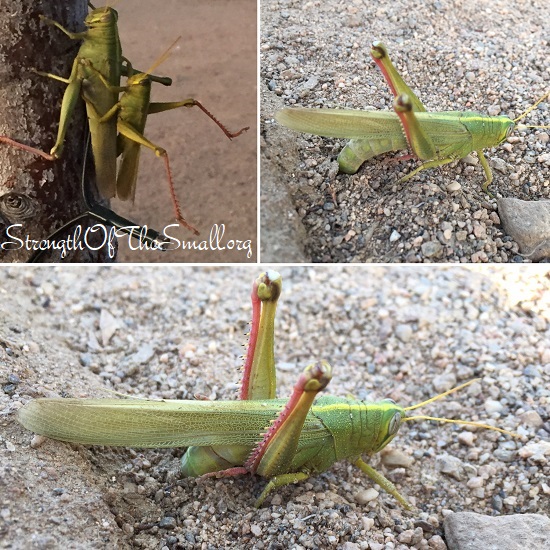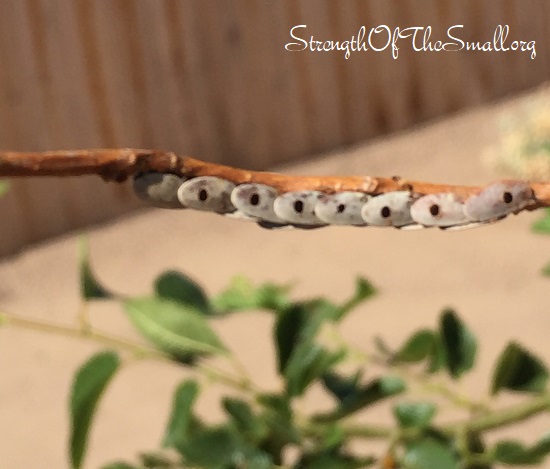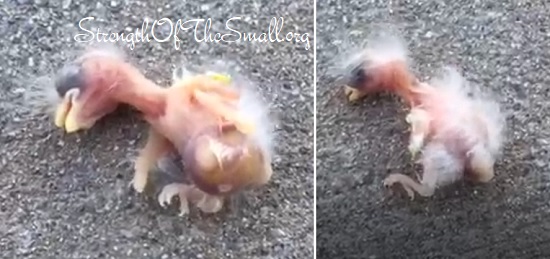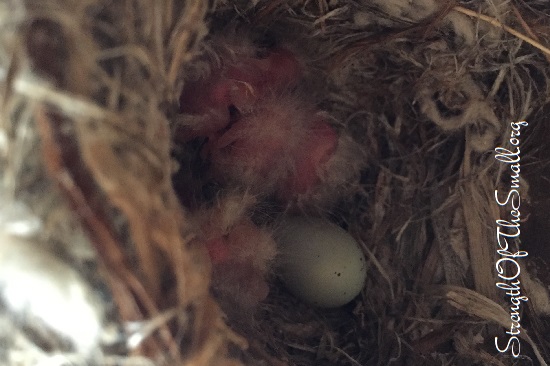When designing our gardens thirteen years ago, we didn’t think about wildlife, we simply wanted to create a simple and relaxing atmosphere both in the front yard and back. As time went by our gardens became an attraction to various wildlife, so much that we had to take drastic actions to protect ourselves and our plants. We have many dense native bushes, shrubs and trees all over our property, which attract birds, hummingbirds, lizards, butterflies, bees, ladybugs, beetles, dragonfly, wasps, hoverflies, stink bugs, praying mantises, garden spiders, and much more (most of which are beneficial garden insects). These plants are nesting sites for birds, most of which prefer the front yard. We have bird feeders, bird baths, and water fountains all around our gardens to keep the birds and other wildlife happy.
Eight years ago we built two birdhouses in the backyard, one of which is double sided. A few years ago, a bird built its nest in one of them and laid ten eggs. Everything seemed to be going fine, the eggs hatched, and both parents went back and forth looking for food and caring for their young. At some point we noticed that the baby birds were constantly chirping and found one of the ground, dead. The parents eventually abandoned their babies most likely due to shortage of food and the remaining nine eventually died in the nest.
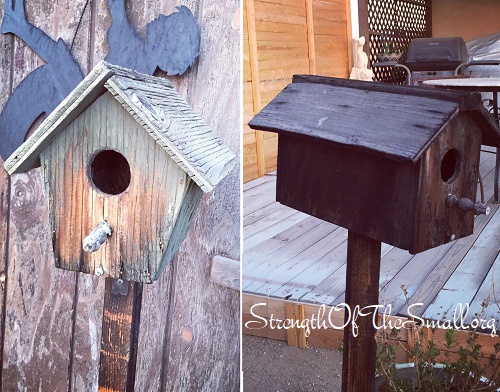
Early this month, a female House Finch laid five eggs in the nest. One of the nestlings fell out of the nest, in what seemed like an attempt to take flight, and didn’t make it. The remaining four flew from the nest a few weeks later.
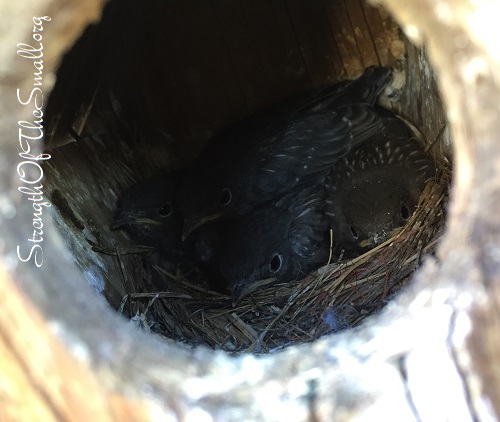
Last weekend while fastening Jasmine vines to a trellis, I saw a bird nest with five tiny eggs hidden among the leaves of the climbing Jasmine. I don’t know why this nesting place was chosen; perhaps it offered camouflage and protection, or because other birds have successfully raised their nestlings nearby.
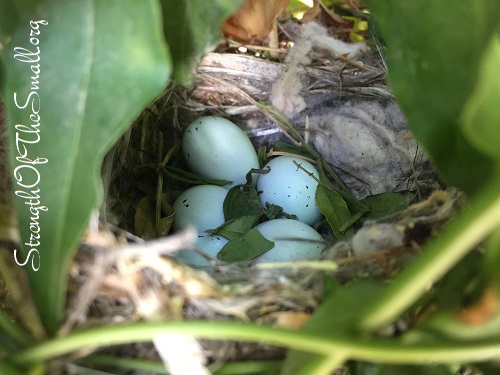
A few days later, we found two dead featherless chicks on the ground and realized the nest had been disturbed. We suspected a crow, since one of the chicks had disappeared. We moved the nest back in place, secured the opening, and hoped the last two eggs would make it.
On Tuesday, we found vines on the ground and noticed that the nest was pulled forward. One of the last two recently hatched chicks had vanished and the last one was lifeless.
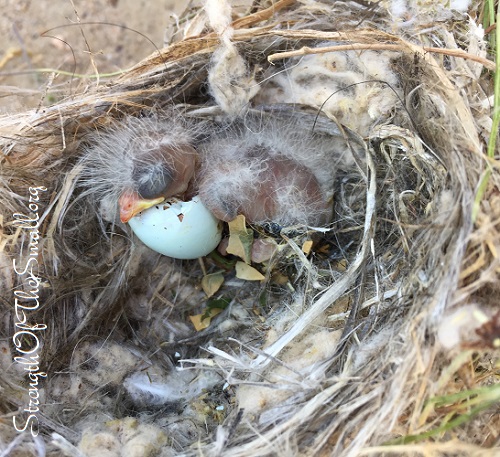
Our backyard is the heart of our home and the place we explore and observe. For now we are looking into ways to better protect and secure the bird nests from predators.
